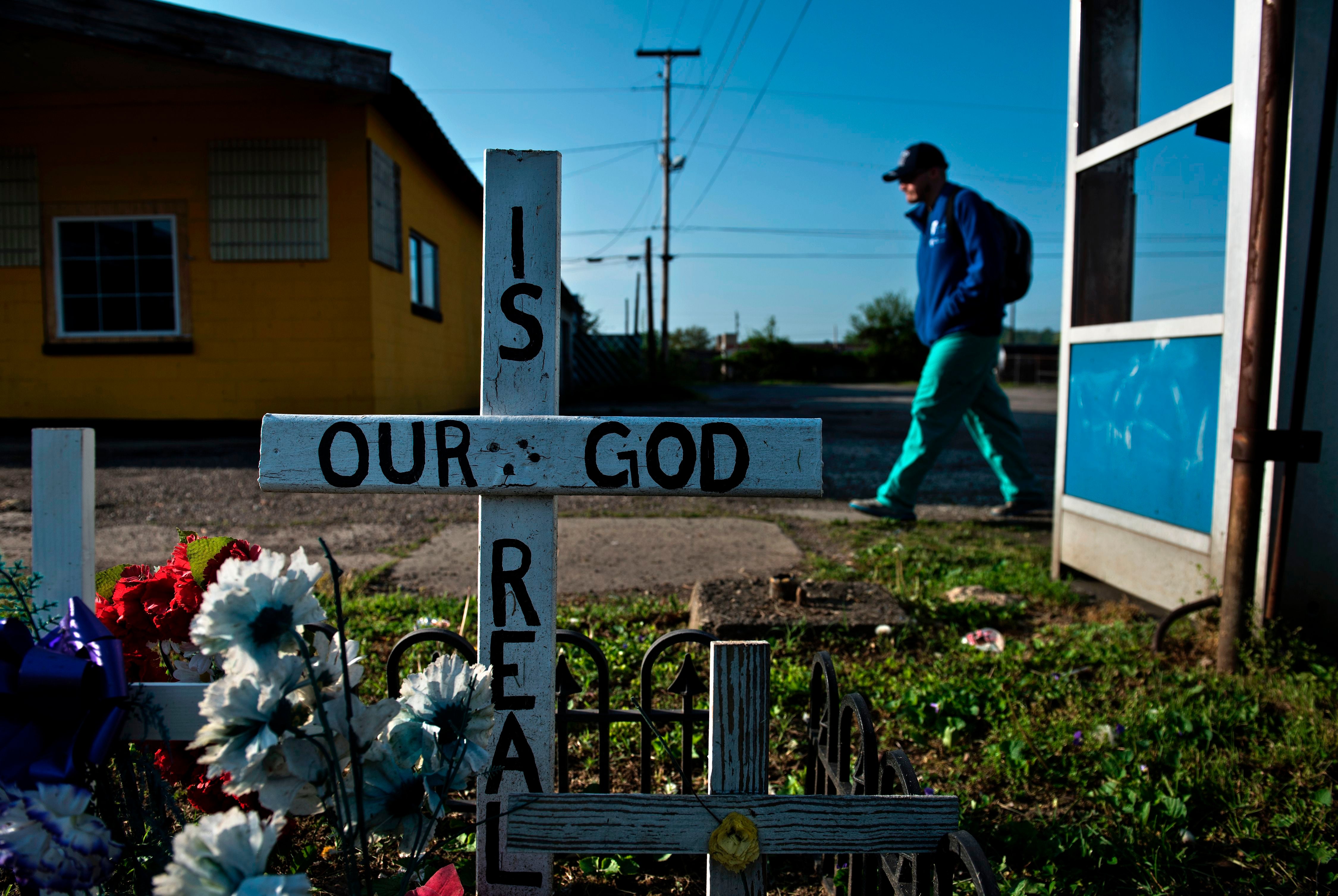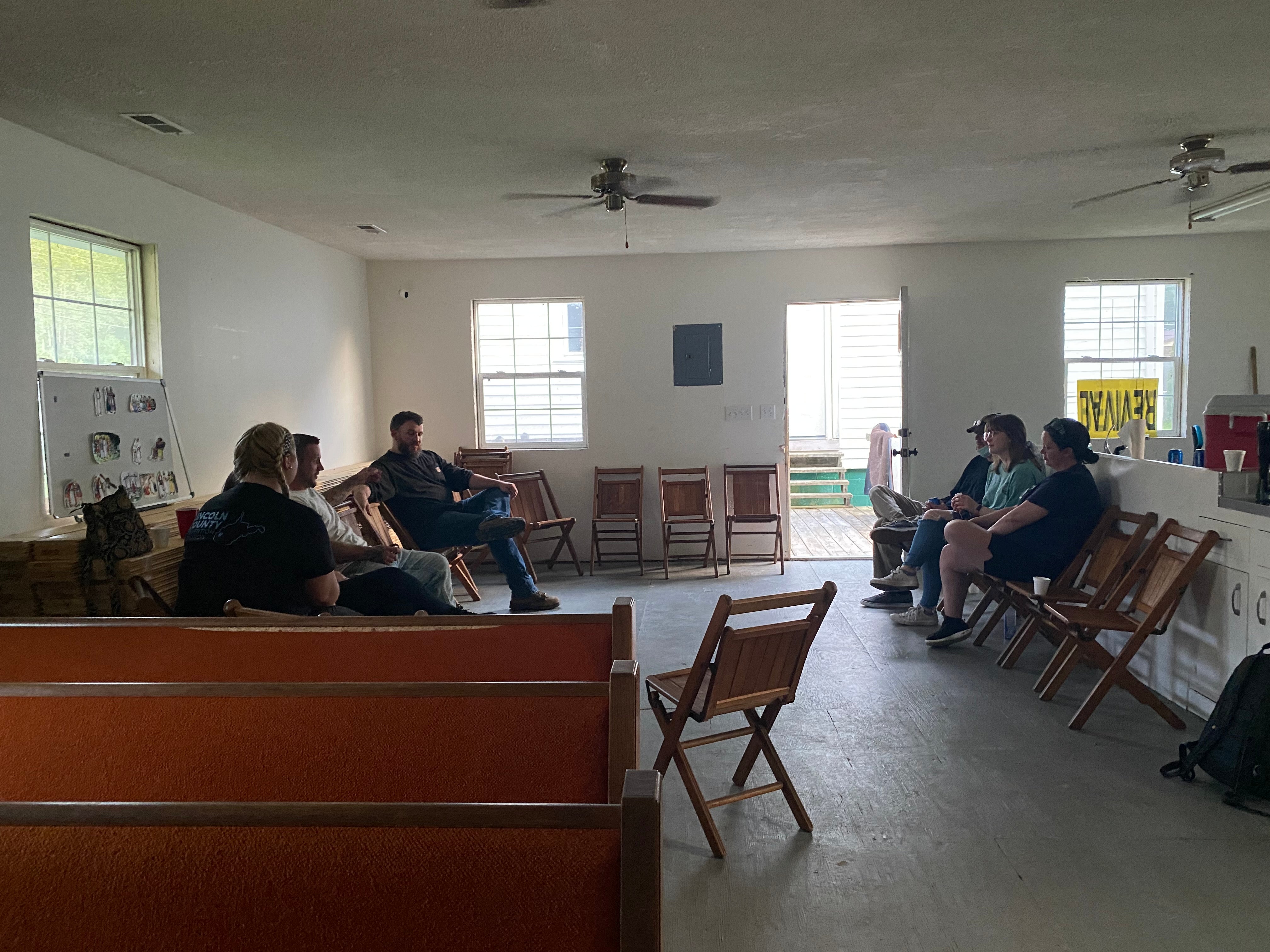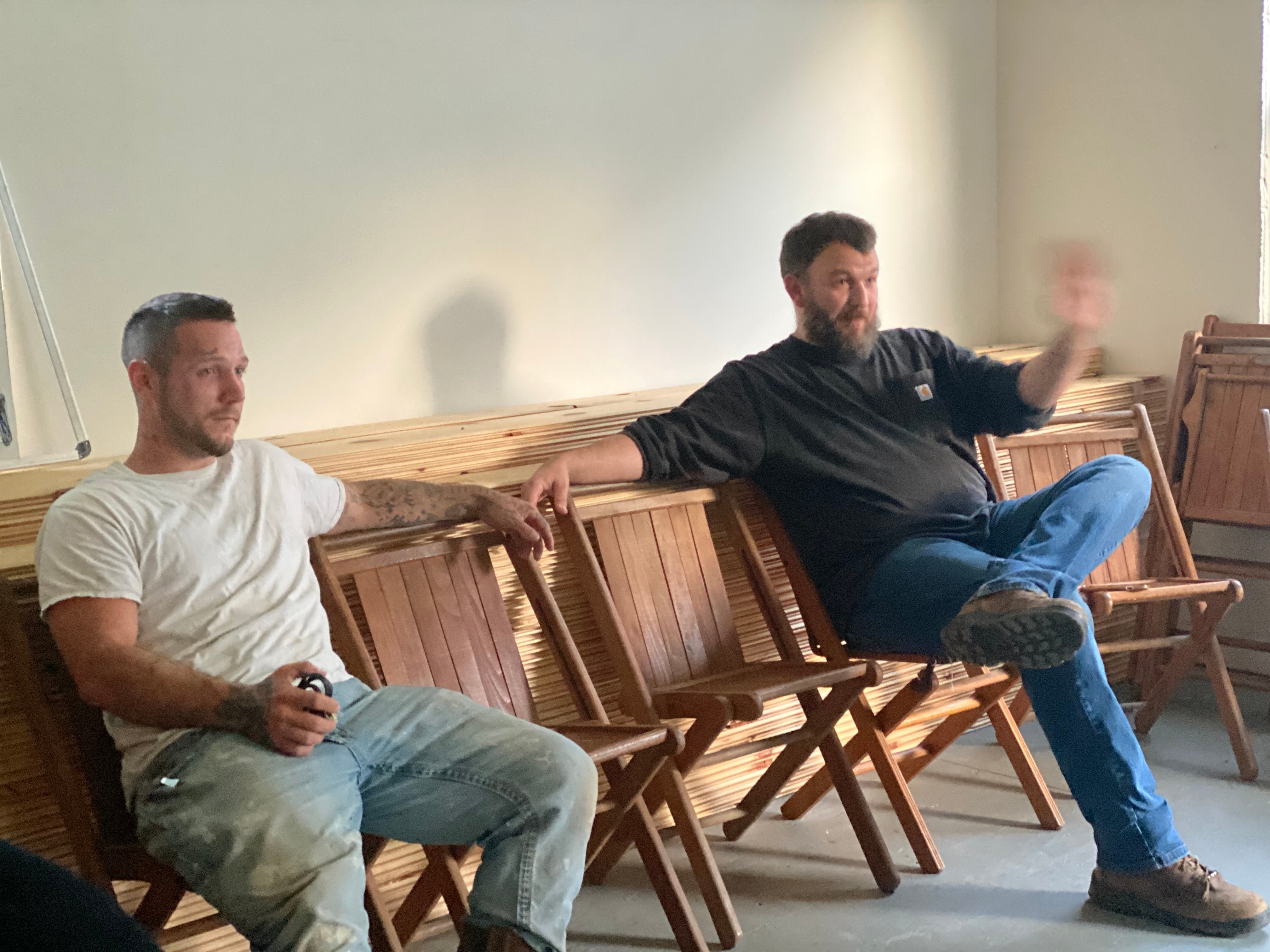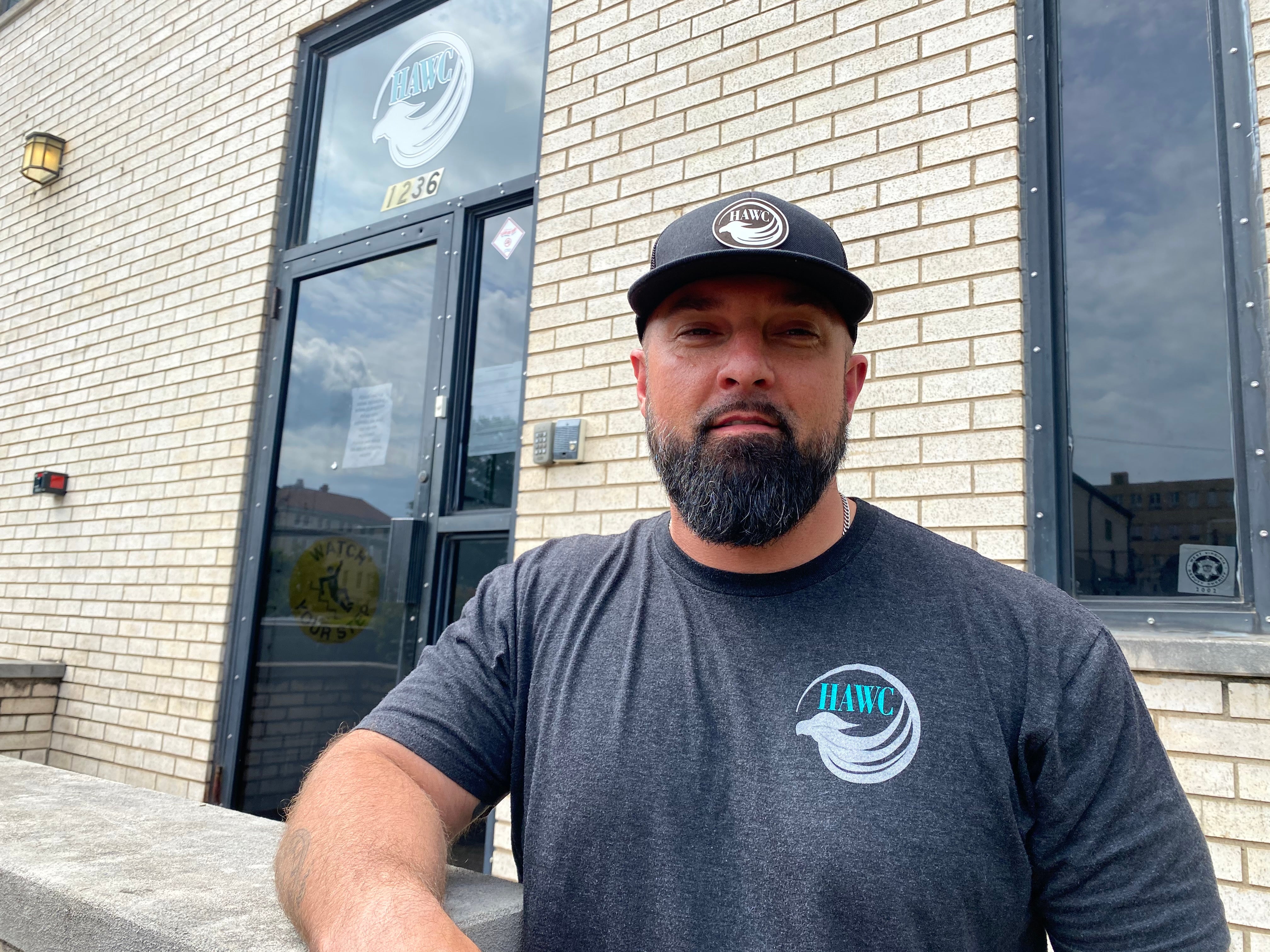These towns were ‘ground zero’ in America’s opioid crisis – now they’re fighting back
The pastor who turned a church from drug den to a place for recovery. The former addict who set up a centre to help those facing the same battles. The everyday people who decided enough was enough. Richard Hall visits the West Virginia communities driving change from the ground up

Your support helps us to tell the story
From reproductive rights to climate change to Big Tech, The Independent is on the ground when the story is developing. Whether it's investigating the financials of Elon Musk's pro-Trump PAC or producing our latest documentary, 'The A Word', which shines a light on the American women fighting for reproductive rights, we know how important it is to parse out the facts from the messaging.
At such a critical moment in US history, we need reporters on the ground. Your donation allows us to keep sending journalists to speak to both sides of the story.
The Independent is trusted by Americans across the entire political spectrum. And unlike many other quality news outlets, we choose not to lock Americans out of our reporting and analysis with paywalls. We believe quality journalism should be available to everyone, paid for by those who can afford it.
Your support makes all the difference.A little over a year ago, the small church house that pastor Daniel Adkins serves in the rural town of East Lynn, in the far west of West Virginia, was overrun. People were living in the gap underneath the building, others in a separate room out back. There were signs of drug use and things were regularly going missing. He decided something needed to be done.
“We went there to run them off,” says Adkins, a bearded, soft-spoken 43-year-old. “But I ended up talking to them and buying them pizza that night. By the end of the conversation my frustration was gone and just sympathy remained.
“We’ve been having these meetings ever since.”
After that encounter, Adkins began holding twice-weekly recovery meetings in the church. They started off small then grew to include dozens from the area. He has helped members enter recovery and turn their lives around, offered guidance and talked for many long hours. He has seen others fall deeper into addiction and die. Funerals, overdoses and hard-fought gains, all under this roof.
His small group is one of dozens of community-led efforts that have emerged to deal with the long-running opioid crisis in West Virginia, a state at the epicentre of the nationwide epidemic.
Over the years, it is grassroots groups like his that have come to define the fightback here: normal people who have been touched in some way by the tragedy, and devoted themselves to fixing it.
The path to recovery
The opioid crisis began in the 1990s with the release of powerful new prescription drugs to treat chronic pain. Pharmaceutical companies promoted their new products with spurious claims that they were not as addictive as other opioids that came before. They became routinely overprescribed by doctors; it was not uncommon to see long lines outside pharmacies as people drove from miles around to pick up prescriptions.
Addiction soared and overdoses rose dramatically across the country. In 1994, the overdose death rate in the US was 4.8 deaths per 100,000 people. By 2015 it had more than tripled to 16.3 per 100,000. It has grown even higher since.
The crisis reached communities small and large, but hit particularly hard in Appalachia, which runs through the east of the US from New York state down to Georgia. Research suggests that deaths were concentrated among those with lower education levels, and among people who worked in industries and settings that were more likely to lead to injury.
When prescription opioids were curtailed by regulations in 2012, millions who had become addicted simply switched to heroin and other illicit drugs. The crisis deepened further still.
West Virginia, a former coal-mining powerhouse, became one of those worst-affected states. The city of Huntington, less than an hour’s drive away from Adkins’ church, was often described as “ground zero” of the opioid crisis.

In East Lynn, Adkins begins his meeting just as dusk draws in. The Church of Christ, a picture-postcard wooden building painted white with a green roof, sits at the bottom of a valley where a creek, a road and a railway line meet.
Inside the back room, a dozen or so chairs are arranged in a circle in front of rows of unused pews, and boxes of pizza that have been a feature of these meetings from that very first night are laid out to the side. One of the members here was also present that night Adkins came to clear out the place. She was living in this room in the depths of addiction. Today she is nine months clean.
I’ve OD’ed, I’ve been in comas, been in the ICU, I’ve robbed people. You name it, I’ve done it
Adkins usually says a few words before each meeting, often some scripture. Tonight he turns to David and Goliath. David’s task in beating Goliath seemed insurmountable at the time, he says, but he triumphed in the end. The road to recovery can seem near impossible sometimes, too, he says.
There are many kinds of recovery meetings, and many rehabilitation programmes across the state. Most addicts try and fail several times before finding one that works for them. But even the best programmes have gaps between them – and there are a thousand different ways in which someone in recovery can lose their footing and fall back into addiction. Small community groups like the one run by Adkins try to fill that gap.
He started the meetings when the problem became too large to avoid. Many of the trailers that line the street on which the church sits were drug houses, he says.
“The kids were playing in the yard and they were literally having to run around the drug activity. They were motorbiking people in and dropping them off to go and get other people. Men were sitting around waiting on their turn to get in the home and use.
“There is probably not a house or a home in East Lynn that hasn’t been affected by it.”
When the meetings first started, he says he had to go out and round people up to get them to attend.
“They kinda gave me a crash course in addiction recovery meetings. I think they were teaching me more than I was helping them.”

Alex Davis, a 27-year-old contractor, is one of the meeting’s long-running members. From an early age he was surrounded by drugs and violence.
“I went through some trouble in my life. I was beaten as a kid. My mom was murdered. I was sexually abused and my whole family was drug addicts, alcoholics and dope dealers. I always felt like I was out of place. And the only time I felt right was when I was high,” he says.
“I’ve been doing drugs for 20 years. I’ve OD’ed, I’ve been in comas, been in the ICU, I’ve robbed people. You name it, I’ve done it.”
He was in and out of jail for years before he met Adkins.
“I didn’t have nothing. I was living on the street, and I just got out of jail. I met Daniel and he was trying to run these meetings. I seen he was really trying, really cared. I never had anybody give me a chance or anybody to help me.”
I woke up and I was 32 years old in a homeless shelter, wondering how I got there
Adkins helped him get set up in a rehab in Huntington, then another after that. Alex has now been clean for 10 months and is helping others in meetings like this.
The pastor caught Alex in a gap he had fallen through many times before.
“He was homeless. The only place they had to go was the trap houses where he’d done his dope before he went to jail,” Adkins says.
“There’s so many things that need to change about recovery. They take them to jail, and while they’re in there they don’t do nothing for them. Then they send them back out and they don’t have a driver’s license, they don’t have their birth certificates, they don’t have nothing to help them enter back in to be a productive member of society.
“They just kinda dump them on the curb.”
Alex adds: “I was the type of person, I could do it, but I need help getting on my feet first. Daniel stood behind me.”
‘Ground zero’ for a solution
Craig Hettlinger’s introduction to the opioid epidemic could not have been more personal. He was a college football player from a comfortable family in Huntington. In his senior year he suffered a sporting injury and was prescribed pain medication.
He couldn’t get off that medication, and when it became difficult for him to find he turned to heroin. That addiction would last for more than a decade.
“I woke up and I was 32 years old in a homeless shelter in Richmond, Virginia. Wondering how in the hell I got there. I had literally lost 13 years of my life,” he says.
It took Hettlinger, now 39, seven tries to get clean. When he finally did, he wanted to use his experience to help people going through what he went through. Like the pastor, he saw a gap in the recovery process that needed to be filled.
Read more special reports from our Supporter Programme
He had been sober just 10 months when he came up with the concept for his recovery centre. His pitch was a programme that centred its treatment around the patient, rather than the other way around.
“It’s sensible, individualised treatment,” he says as he sits in a side office on the ground floor of the Huntington Addiction Wellness Center.
“A lot of these programmes are programme-centred, not client-centred. If you say your programme is 90 days and you get to 90 days and this client is still unhealthy, why in the world are we sending him or her out to go live life and attempt to pay their own bills and attempt to live sober when they’re not? When they haven’t developed the skills necessary first?”
Hettlinger’s programme gives patients housing for at least five months, and when they are free of drugs it sets them up with a job and helps them apply for paperwork and documentation – all the things needed to start their lives again. They offer property to lease for people who finish the programme and employment in one of several businesses they run.

His centre hit the ground running with a $1m grant from the state. It now has 33 residential beds and is still growing. It is another example of West Virginians responding to the opioid crisis.
“There’s no question Huntington’s ‘ground zero’ for drug addiction and the epidemic, but there’s also no question that it’s a ‘ground zero’ for the solution,” says Hettlinger.
“We have recovery programmes that are absolutely fantastic, that people come here from all over the country to get help. Our ideas are being duplicated all over the place.”
One of those ideas is Huntington’s quick response team. The team was set up in December 2017 during what was then a record-setting year of overdose deaths. The city had become the focal point of the nationwide opioid epidemic – news television crews, documentary makers and journalists travelled to the town to document the chaos on the streets.
The idea, inspired by a similar programme in Colerain Township, Ohio, aimed to have someone from a team composed of mental health specialists, emergency responders and law enforcement visit an overdose patient within 48 hours of their overdose. They would distribute medication to revive the patient if they overdosed again but also helped guide people into treatment programmes.
Last year it was chosen as a model for a federal scheme to create similar programmes nationwide. First responders have visited Huntington from across the country to learn from it.
Appalachian spirit
The sight of a community coming together to fight the crisis was attractive to Amanda Coleman, who runs a homeless shelter in Huntington. She moved back to the city with her husband in 2013 after two decades away and planned to stay only for a couple of years.
“But we got sucked into this Appalachian spirit and the innovation that was occurring and the sense of community coming together,” Coleman says.
“It’s the sense of pride of place, despite all of the complications of that place and the history of the ways in which people in Appalachia have been subjugated, and continue to be. That resourcefulness and that ability to kind of pull together and be creative.”
She traces the beginnings of this community-led fightback to 2015, and to one person.
The focus became: how can we address this?
“There was this spark,” she says. “This woman posted on her Facebook page. I don’t think anybody was calling it an opioid epidemic at that point, but she was just really upset about what she was seeing in her community. So it started this whole conversation on Facebook that led to a group of people getting together to talk about what’s going on.”
That initial post led to a meeting of a random collective from around Huntington that changed everything.
“It just snowballed. I didn’t want to leave that night,” Coleman says. “There were people in the group who had a child who had overdosed and died. And then there were some people in the group who’ve been victims of crime, their home had been broken into multiple times. It was this really weird dynamic. But once they actually started talking to each other it was like there was more common ground there than they would have anticipated.”
From then on, she says, the crisis in Huntington became less “us” versus “them”, less a battle between addicts and everyone else, and more a community pulling together.
“I think it transformed the whole community,” she says. “The focus became, how can we address this? And then that’s where that kind of pride came into play, because people were willing to say, ‘Yeah, we have a serious problem here, but we can fix it.’”
A long road ahead
For a long time, many felt like the crisis was being ignored by Washington, although in recent years there has been a more concerted federal effort to address the issue, and last year it was announced that the state would receive $43m in federal funds from the department of health.
West Virginia had been making small gains in the fight against the opioid epidemic when the coronavirus pandemic arrived. Measures to combat the virus caused fatal overdoses to spike to record highs as addicts were forced into isolation and away from treatment programmes.
Adkins sees a long road ahead. It’s a full-time job, and recovery is not always a straight line.
“It gets a bit overwhelming balancing my family and this work. Sometimes I’m discouraged. But I’ve been on a high the last couple of weeks. We had 11 or 12 here the other day and everyone was clean. That was the first time we had that. We just sat around and laughed like we were round a campfire,” he says.
And success has a knock-on effect at a very local level, too. Many of those in the meeting today are already helping others.
“Some of those who joined a while back are becoming a big part of our recovery meetings. I see that too, that maybe the help is going to come from inside the group,” says Adkins. “As people get better, their hearts are still minded to come out here and help. The people struggling today are going to help us tomorrow.”
Outside, as the meeting wraps up, Alex is talking to a younger man who attended but didn’t talk. They know each other. He asks him if he wants to go into rehab and tells him he can get him a job if he does. The younger man listens, and nods silently.

Join our commenting forum
Join thought-provoking conversations, follow other Independent readers and see their replies
Comments